
The 1812 United States presidential election was the seventh quadrennial presidential election. It was held from Friday, October 30, 1812 to Wednesday, December 2, 1812. Taking place in the shadow of the War of 1812, incumbent Democratic-Republican President James Madison defeated DeWitt Clinton, who drew support from dissident Democratic-Republicans in the North as well as Federalists. It was the first presidential election to be held during a major war involving the United States.

The 1816 United States presidential election was the eighth quadrennial presidential election. It was held from November 1 to December 4, 1816. In the first election following the end of the War of 1812, Democratic-Republican candidate James Monroe defeated Federalist Rufus King. The election was the last in which the Federalist Party fielded a presidential candidate.

The 7th United States Congress was a meeting of the legislative branch of the United States federal government, consisting of the United States Senate and the United States House of Representatives. It met in Washington, D.C. from March 4, 1801, to March 4, 1803, during the first two years of Thomas Jefferson's presidency. The apportionment of seats in the House of Representatives was based on the First Census of the United States in 1790. Both chambers had a Democratic-Republican majority, except during the Special session of the Senate, when there was a Federalist majority in the Senate.

Richard Stockton was a lawyer who represented New Jersey in the United States Senate and later served in the United States House of Representatives. He was the first U.S. Attorney for the District of New Jersey, holding that office from 1789 to 1791, and ran unsuccessfully for vice president in the 1820 election as a member of the Federalist Party, which did not nominate a candidate for president.
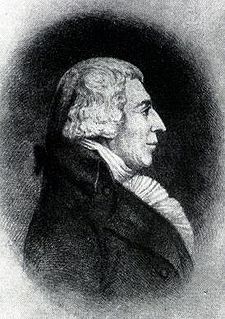
Richard Dobbs Spaight was an American politician, planter, and signer of the United States Constitution, who served as a Democratic-Republican U.S. Representative for North Carolina's 10th congressional district from 1798 to 1801. Spaight previously served as the eighth governor of North Carolina from 1792 to 1795. He ran for the North Carolina State Senate in 1802, and Federalist U.S. Congressman John Stanly campaigned against him as unworthy. Taking offense, Stanly challenged him to a duel on September 5, 1802, in which Stanly shot and mortally wounded Spaight, who died the following day.
The Midnight Judges Act represented an effort to solve an issue in the U.S. Supreme Court during the early 19th century. There was concern, beginning in 1789, about the system that required the Justices of the Supreme Court to "ride circuit" and reiterate decisions made in the appellate level courts. The Supreme Court Justices had often expressed concern and suggested that the judges of the Supreme and circuit courts be divided. The Act was repealed by Congress on January 22, 1802.
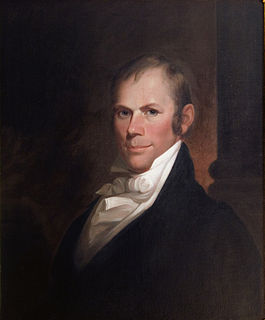
Elections to the United States House of Representatives for the 13th Congress were held at various dates in different states between April 1812 and August 1813 as James Madison was re-elected president.

Elections to the United States House of Representatives for the 10th Congress were held at various dates in each state between April 29, 1806 and August 4, 1807 during Thomas Jefferson's second term with the new Congress meeting on October 26, 1807.
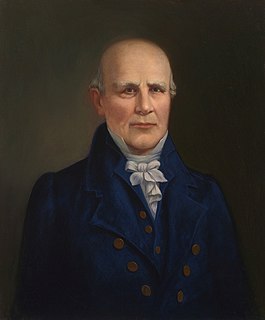
Elections to the United States House of Representatives for the 8th Congress were held at various dates in each state, from April 26, 1802 to December 14, 1803 during Thomas Jefferson's first term in office. It was common in the early years of the United Congress for some states to elect representatives to a Congress after it had already convened. In the case of the 8th Congress, the representatives from New Jersey were only elected after its first meeting on October 17, 1803.

Elections to the United States House of Representatives for the 7th Congress in 1800 and 1801, at the same time as the 1800 presidential election, in which Vice President Thomas Jefferson, a Democratic Republican, defeated incumbent President John Adams, a Federalist.
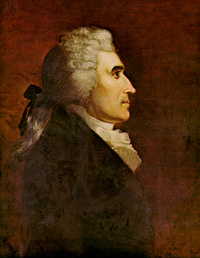
Elections to the United States House of Representatives for the 5th Congress took place in the various states took place between August 12, 1796, and October 15, 1797. The first session was convened on May 15, 1797, at the proclamation of the new President of the United States, John Adams. Since Kentucky and Tennessee had not yet voted, they were unrepresented until the second session.
William Coxe Jr. was a pioneer pomologist and a U.S. Representative from New Jersey. He served as Mayor of Burlington, New Jersey.
The United States Senate elections of 1802 and 1803 were elections for the United States Senate which had the Democratic-Republican Party assume an overwhelming control thereof.

Elections to the United States House of Representatives in Pennsylvania for the 8th Congress were held October 12, 1802.
Elections to the United States House of Representatives in New Jersey for the 6th Congress were held October 10, 1798.

Virginia increased its apportionment from 19 to 22 seats after the 1800 census. Virginia's congressional delegation remained the largest of any state, but would lose this distinction permanently after the Census of 1810. Elections were held over three days in April 1803.
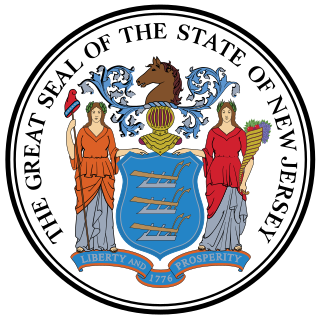
The Federalists ran a mixed ticket consisting of 2 Federalists and 4 Democratic-Republicans, one of whom was also on the Democratic-Republican ticket. The Federalists capitalized on resentment over the replacement on the official Democratic-Republican ticket of Ebenezer Elmer, from South Jersey, with Thomas Newbold from Monmouth County and the retention of James Sloan. This ticket was formed too late to gain sufficient support, but the Federalists did do much better in state elections that year than they had in previous elections.

New Jersey kept its delegation at six seats but changed from electing its Representatives on a statewide general ticket to using three plural districts of two seats each. These districts were used only for the 1812 election, and the state returned to using a single at-large district in 1814. This was only the second time that New Jersey used districts.

The 1802 United States Senate election in Pennsylvania was held on December 14, 1802. Samuel Maclay was elected by the Pennsylvania General Assembly to the United States Senate.

The 1812 United States presidential election in New Jersey took place between October 30 and December 2, 1812, as part of the 1812 United States presidential election. The state legislature chose eight representatives, or electors to the Electoral College, who voted for President and Vice President.













